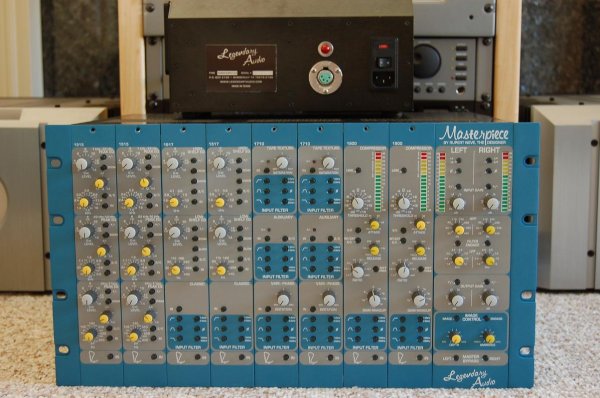If servo subs are the answer then I'm curious why the more popular Sub brands like JL,Magico, Wilson, SVS, B&W..etc are choosing to not use that technology? I found a handful of Servo based brands (Rythmik, Velodyne, Paradigm) and I'm sure there a others but for whatever reason its seems very few of the higher end music centric systems (just looking on this forum as an example) seem to not be using them. Why do you suppose that is and what are the negatives against Servo based Subs?
If delay, of any kind, isn't a serious problem then why does it seem like such a popular topic with lots dedicated text on how to address/combat it when blending Subs with Main towers? Why are these people not just buying Servo Subs and calling it a day?
I obviously don't know which is why I am asking the questions.
Well, some amps are coming closer to servo control.
The tech in drivers has improved. They can be pretty darn good in convention subwoofers. But my point being if you're under the impression a few miliseconds is the end-all, then servos are there to aid you.
But the biggest function is the non-necessity due to frequency range. Magico speakers and many other big time ones already play a pretty full range. The subwoofers only kick in at the extreme of the spectrum, and simply put, could have almost any group delay you can imagine and make no difference to the experience. In some cases it might make some speakers look embarrassed. Mismatches could be a problem, since a servo is going to show you problems in your stereo where is the problems create a synergy with other components. Again, overall at the extreme it is really just about being able to move enough air to keep up with dynamics.
For example the Q subwoofer paired with the Q line is only expected to play the 15-24hz area, with the fullrange speakers. It's a beast that can play extremely loud and clean. But even if it had truly bad group delay, you wouldn't be hearing it. Hell, you don't even really "hear" that frequency range so much as feel it.
Where as if you're trying to integrate subwoofers in with bookshelves, or even to play up to a midrange, that's another story. In those cases articulation start becoming a big factor, because you're blending into the music. At this point if you want big displacement with musical ability, it's smart to look at servos.
I suspect many manufacturers prefer not to spend the time and money on servos, when they can sell you something else that costs them less overall. But some of them may use servo technology and utterly avoid trying to market it, since it's not a buzz word or super easy to explain.
Overall I don't think there is anything wrong at all with conventional subwoofers. It all really depends on use etc. BUT if you're trying to "solve" group delay and such, they're a ticket to getting much closer. Again, if it was such a massive problem then maybe you'd see more servo based subs.
I have yet to see anything in any of these texts that can suggest you do anything but sit on the subwoofer, or use a full DSP for all the signal. One of them sells equipment, the other won't happen. People post this stuff for the same reason they do everything else, they want to be heard, look smart, whatever... And the ideas are simplistic enough they can feel like they're reached some sorta unknown goal that they can understand. But how many people do you see practicing all of these "ideas"? (many of which are not plausible, as we found out) You don't hear about, you only read about it. Where are all of the testimonials?
For home theater people all the DSP stuff makes life simple. They don't play around with moving speakers to sound just right, they design a room and DSP it to work with whatever they feel like should be working. (which does not provide the best results, the ability of a DSP is more limited than people will admit) They're the same group that thinks all DAC's sound the same. This crowd will take easy solutions over ultimate fidelity.















